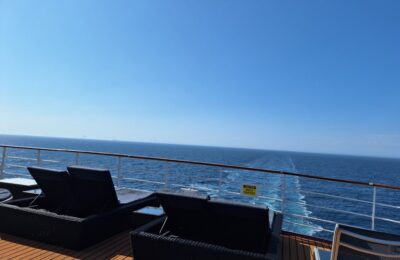Saturday August 6, 2022
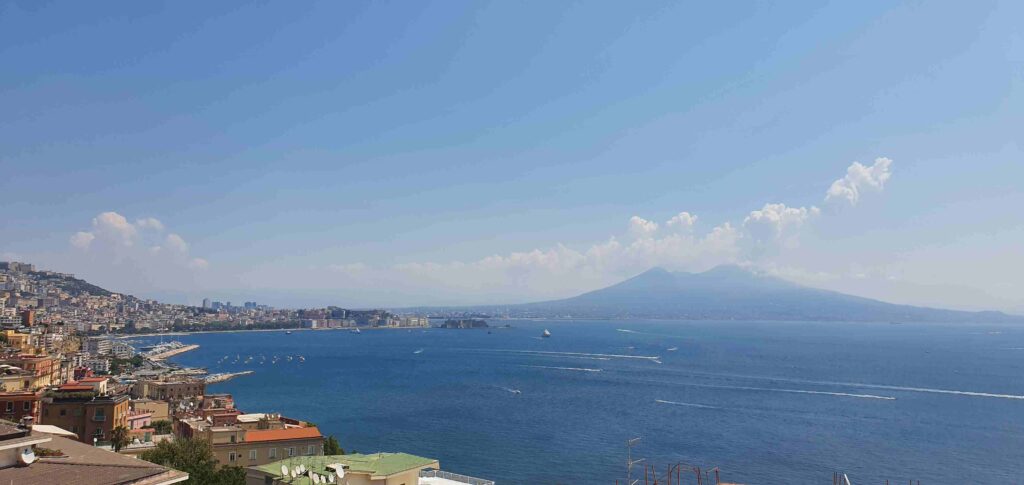
We boarded our bus at 7.30 am, and set out for Pompeii, just south of Naples, which should have been a 2.5-3 hour drive, but because of traffic, it was more like a 4.5 hour drive (would’ve been better to take the train…) however, our bus dropped us off at the UNESCO world heritage site, we grabbed some lunch and then entered into the complex.
Unlike most super-touristy things we’d done, there were minimal lines, and, although it was busy, it didn’t feel busy. It did feel hot though! If you happen to find yourself in Pompei in August, make sure you wear clothing where sweat marks don’t show. We had a super-humid day with thunder/rain on the hills that came to nothing, but just made one sweaty and gross.
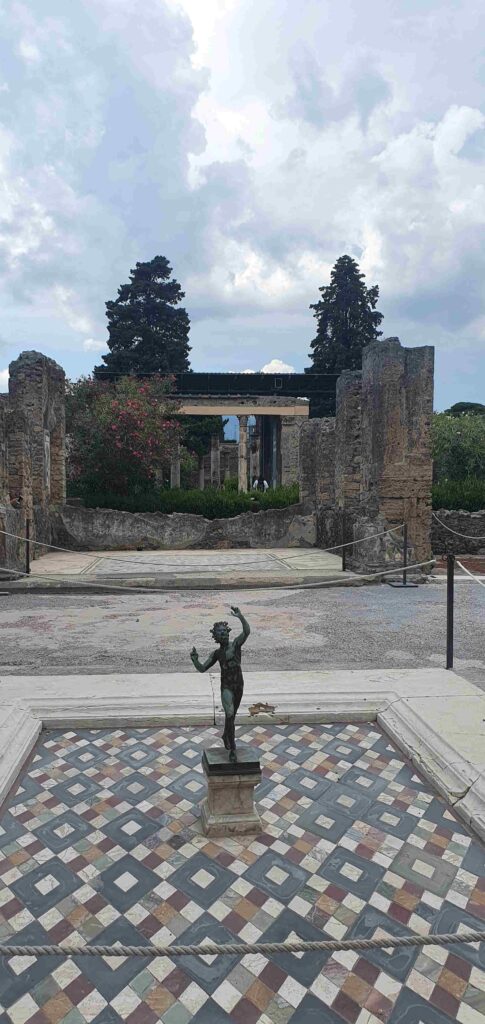
Although we thought we’d paid for a guided tour, it turns out we hadn’t, so we downloaded a GPS enabled app, and as we moved around Pompei and found geolocations, it would give us a commentary about what it was that we were seeing.
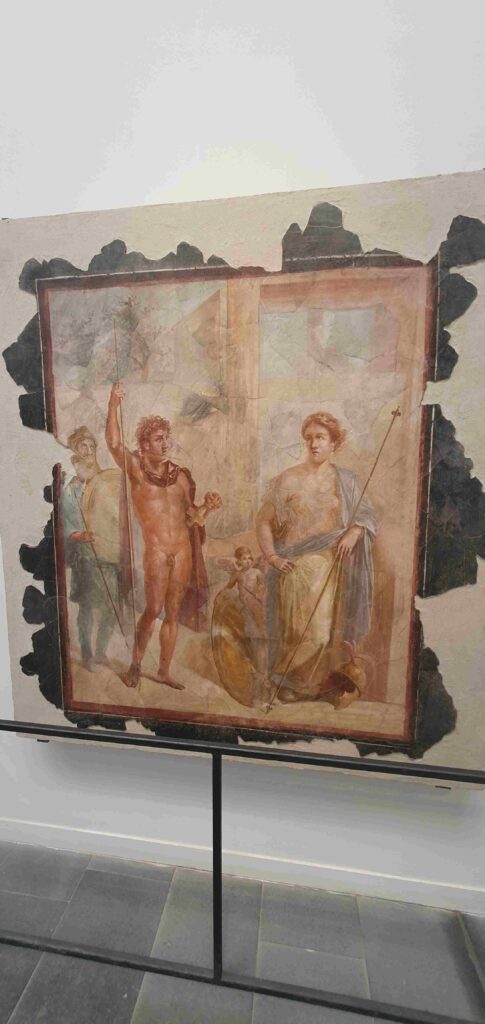
This place is unreal. I had wanted to go here since I studied Classics aged 17, but what we studied didn’t do it justice at all. I’m sure you know the vague outline of the story – volcano blows up, town gets covered in volcanic debris, loads of people are buried instantly and hundreds of years later discovered, and everything is perfectly preserved.

That summary doesn’t really go into detail about how perfectly preserved everything is.
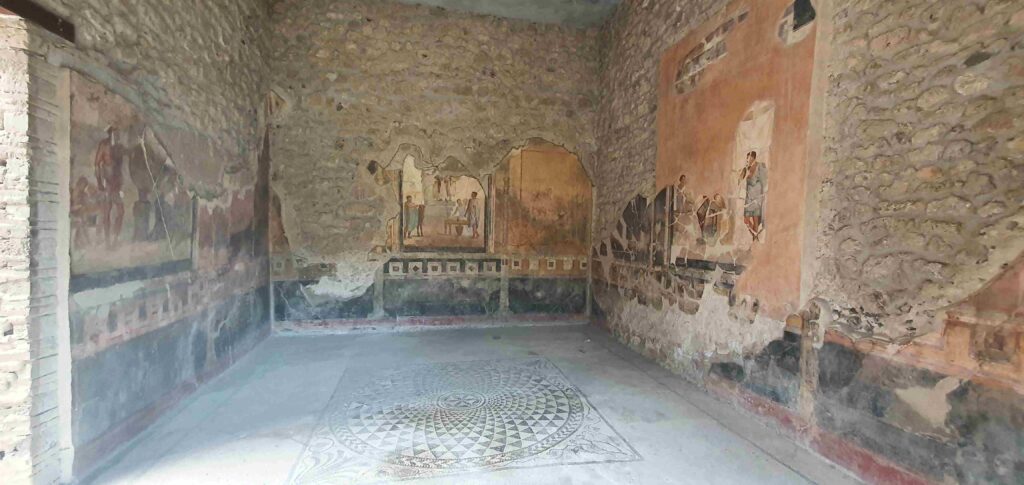
There are loads of examples where you can see the frescos still on the wall, the marble still in the bathing house, the signs up around town pointing you to where the brothel is. The level of detail is amazing!
Interestingly, the word for sex workers in Ancient Pompeii was Lupa, the building where they worked called the Lupanare. Lupa also translates to she-wolf, evoking references to the legend of Romulus and Remus, founders of Ancient Rome who were raised by a she-wolf, also of the she-wolf form of the goddess Diana.
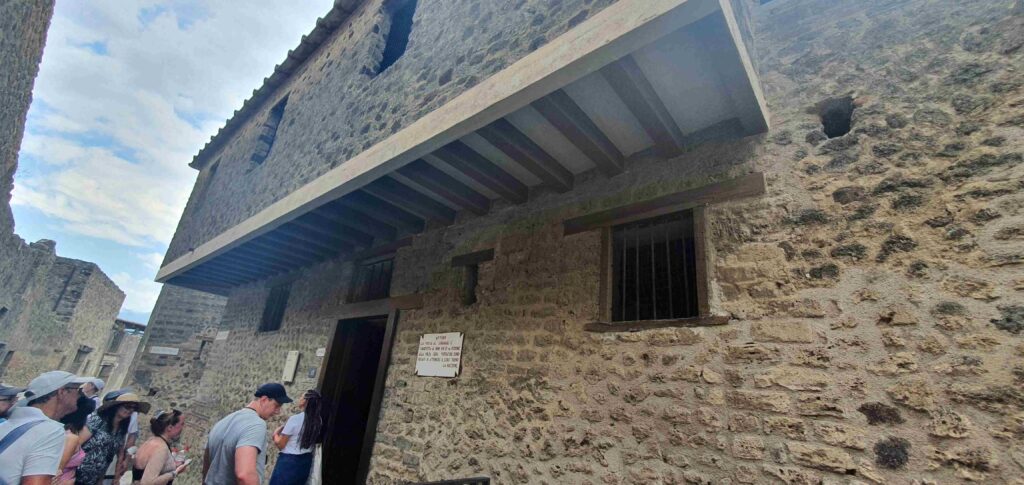
I can’t quite figure out if it is supposed to be an honorific term, a back-handed compliment or completely unrelated, but I thought it was an interesting point. (Read more here and here) Comment below if you have heard anything about this – I’d be very interested to know more.
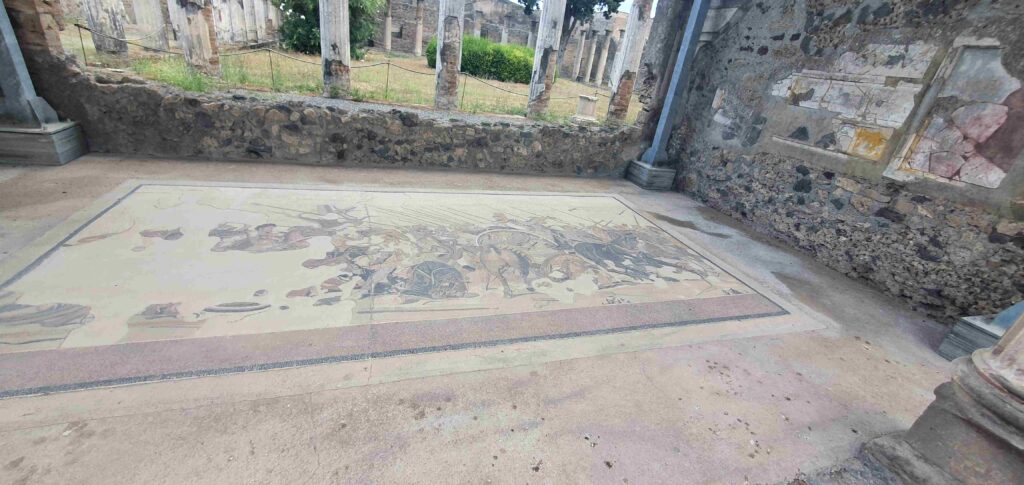
We wandered around the ancient streets trying to imagine what life must’ve been like all those centuries ago, and how scary it must’ve been when the ash and pumice was raining down on their homes, filling their streets and caving in their rooves.
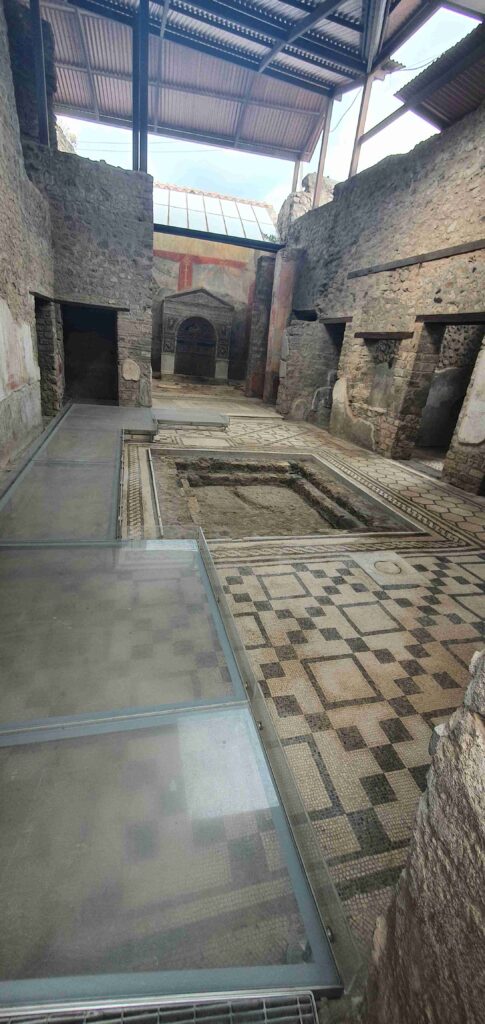
The part that struck me the most was the bathing house, how the marble floors were still in tact, the frescos on the wall still showing an amazing amount of detail, and the amount of natural light being let in by the domed ceiling quite spectacular.
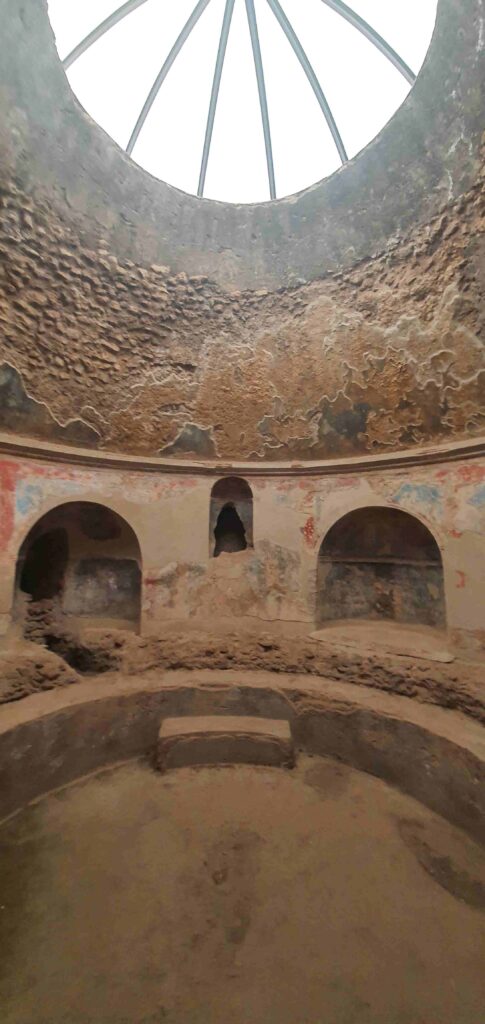
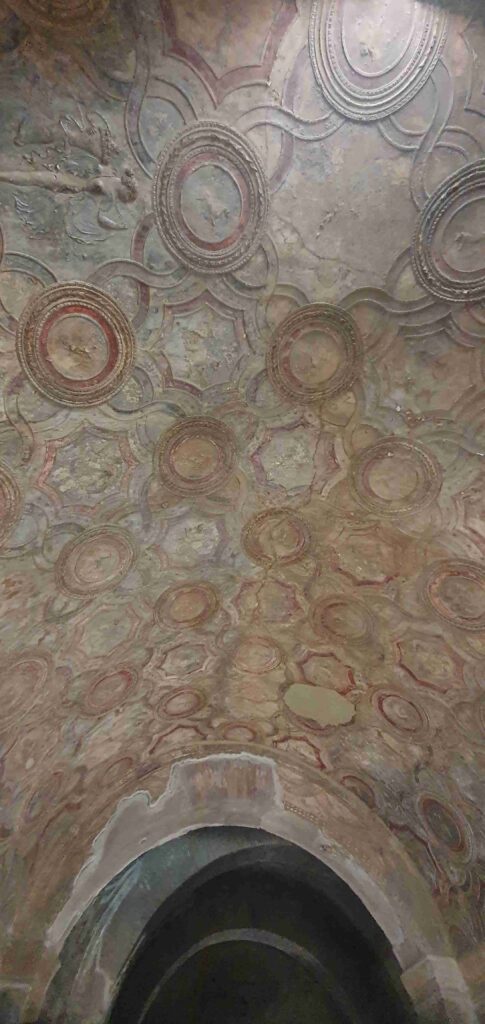
We like to think that we are so advanced in our modern age, but the Romans did such a good job of building things that they have been standing for over 2000 years a lot of them, and the Egyptians and many other civilisations before them.
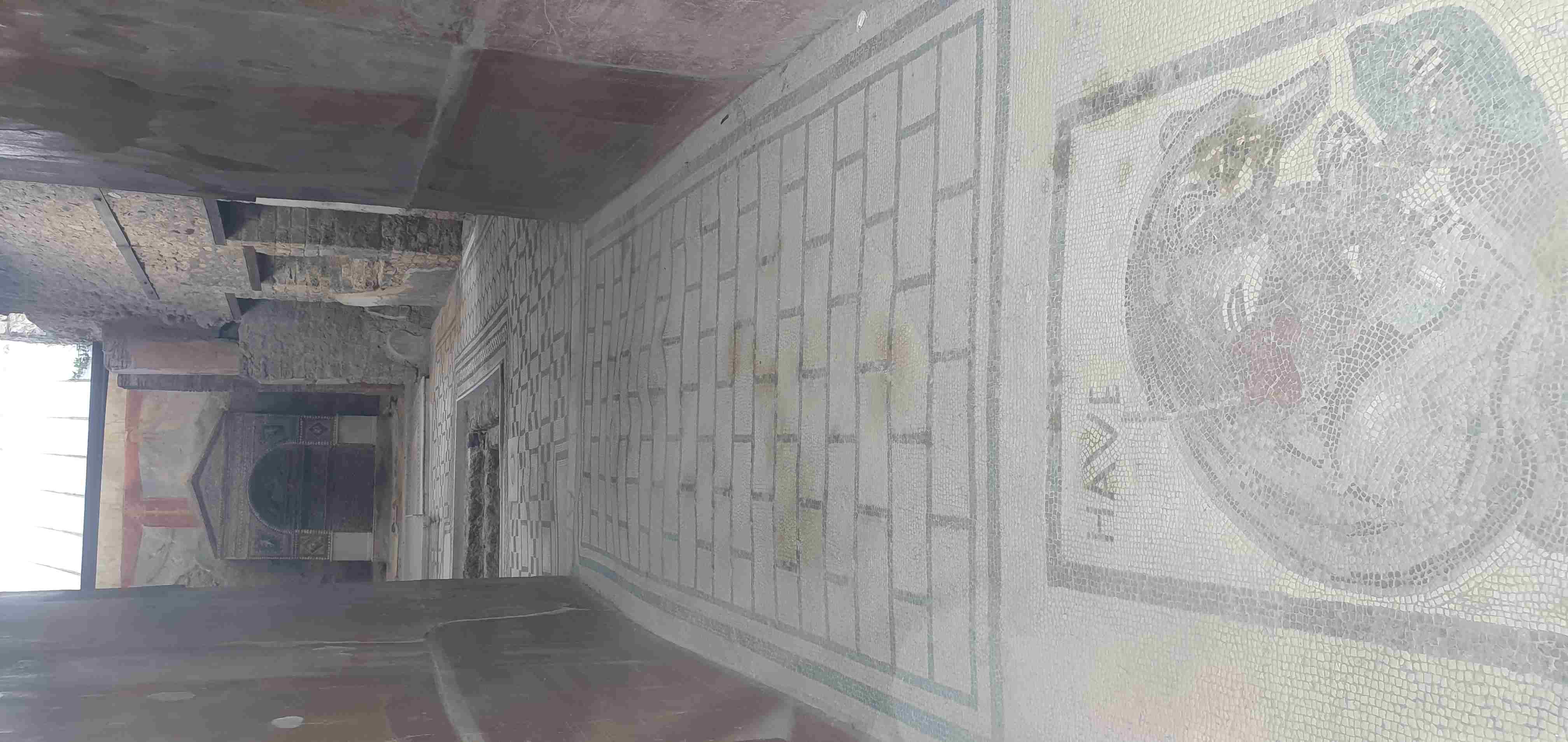
What will we have to show for our civilisation 2000 years from now? Will there even be a civilisation left? It’s a daunting thought. The more I learn about history, the more I learn the importance of zooming out, and thinking beyond one’s own tiny zip of a life time to our part in the tapestry of time, and how we can be a good ancestor.

And all the men and women merely players;
They have their exits and their entrances,
And one man in his time plays many parts…. what do you want your part to be?
